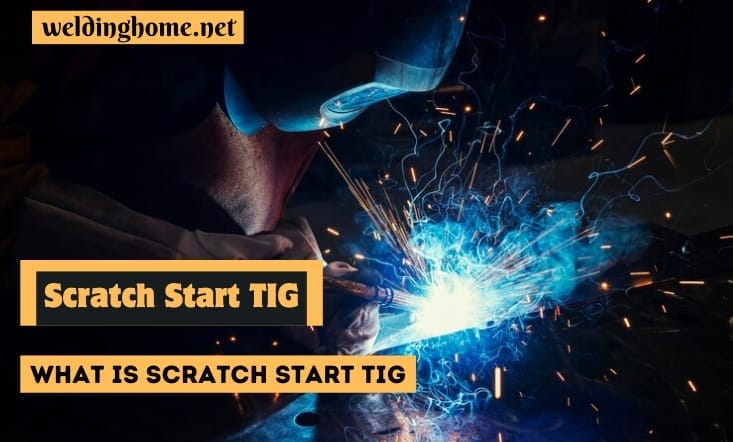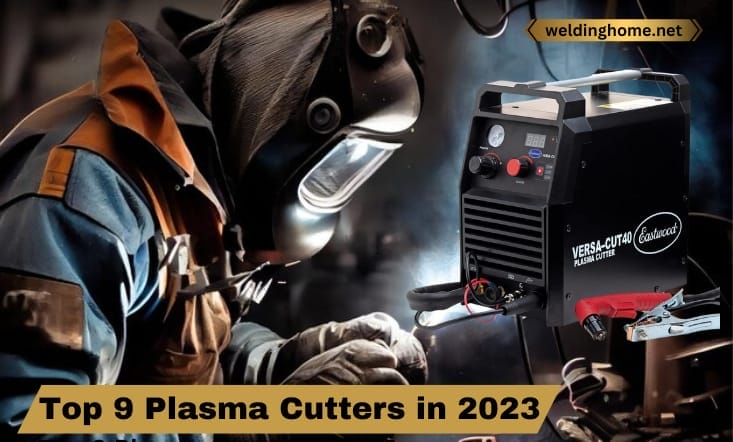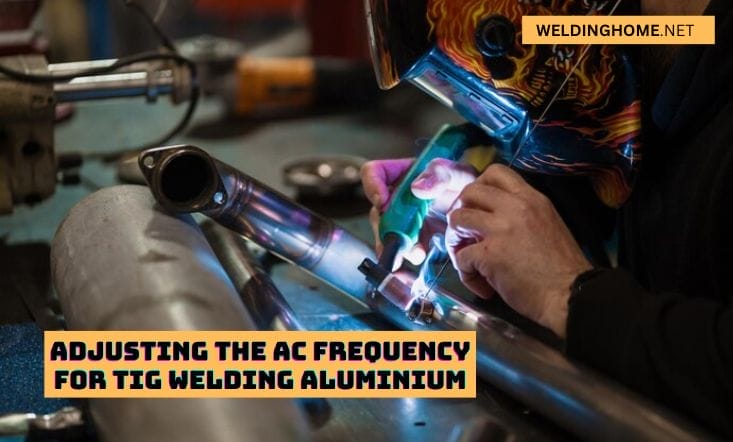Aluminum TIG Welding A Comprehensive Guide2023

Introduction
The process of TIG welding aluminum is flexible and in high demand in many different industries. This article explores the basics of TIG welding for aluminum, discussing essential techniques, valuable tips, and a wide range of applications. TIG welding is preferred for its capability to produce strong, clean, and attractive aluminum welds Aluminum Tungsten Inert Gas (TIG) welding is a widely used welding process for joining aluminum materials..
1. Introducing Aluminum TIG Welding – What is it and why use it?

The Aluminum TIG Welding method for aluminum involves using an electric arc to generate heat between a tungsten electrode that doesn’t get consumed and an aluminum workpiece. It produces high-quality, strong welds with improved aesthetics compared to traditional MIG welds. The process is also more efficient than oxy-acetylene welding since it requires fewer pre-weld and post-weld operations. Industries such as automotive, aerospace, marine, and engineering commonly use this process.
2. Getting Started with Equipment – Gather necessary tools and supplies
Be well-prepared by having all the necessary equipment on hand, laying the groundwork for a fruitful and flawless welding experience. You will need a welder, an adjustable power source with at least 120-amp output capacity, tungsten electrodes, welding filler rods, aluminum flux, a welding wire spool holder, and safety gear such as gloves and face shields. Additionally, Choosing the correct tungsten electrode is crucial for the task at hand.
2.1 TIG Welding Machine:

To perform aluminum TIG welding, you need a TIG welding machine, which is essential for providing the necessary power and control during the process.
When choosing a TIG welding machine for aluminum, take into account the following factors:
- Power Output: Ensure that the welding machine offers sufficient power output to handle the thickness of the aluminum material you intend to weld. Higher power outputs are generally required for thicker aluminum.
- AC/DC Capability: Aluminum welding often requires alternating current (AC) output to address the oxide layer on the surface. Ensure that the TIG welding machine provides AC capability for welding aluminum.
- Pulse and Frequency Control: Look for a machine that offers pulse and frequency control settings. These features help manage heat input and control the width and penetration of the weld bead.
2.2 TIG Welding Torch:
When welding aluminum, the TIG torch is the tool that supplies both heat and filler metal to the joint. To choose a TIG torch for aluminum welding, refer to the power output required by the material’s thickness. Generally, higher-power torches are needed for thicker aluminum materials.
3. Mastering the basics of aluminum welding

It is essential to make sure you have the required tools and supplies before starting your aluminum TIG welding journey. To ensure a successful weld, make sure that you clean the surface of the material and remove any oxide layers or other contaminants. Additionally, be aware of how different joint designs can affect the quality of the weld – while fillet joints may require less heat input, butt joints often need more heat and should be pre-heated.
To produce the strongest aluminum welds, practice making multiple passes over the joint. Depending on your material’s thickness, you may need to use a filler rod to provide additional strength and prevent cracks or porosity. When welding thicker materials, use an alternating current (AC) to reduce the risk of burning through the material.
How to achieve a perfect, no-defect weld
For quality aluminum welding, practice and patience are key. Prior to welding, ensure that the settings are correct according to your welder’s instructions.
Here are some tips on making a quality weld:
Use a short arc length – The shorter the arc length, the more concentrated heat input will be at the weld joint resulting in better penetration.
Keep the tungsten electrode clean – A contaminated or oxidized tungsten can cause poor weld quality. Make sure to sharpen and clean your tungsten if necessary.
Use short and slow travel speed – A slower travel speed will reduce the risk of warpage due to heat buildup in thin aluminum materials, allowing for better control over the weld bead.
Maintain a consistent welding arc – A consistent arc is essential for achieving good welds, so practice maintaining a constant amperage and voltage to ensure that the weld pool does not cool too quickly.
Utilize post-weld cleaning processes – After finishing your weld, consider using cleaning processes such as sanding or grinding to achieve a consistent and uniform finish.
Preheat the material to start welding: preheating can help to decrease the occurrence of weld porosity.
Air-Cooled vs. Water-Cooled: An air-cooled TIG torch can be used in most aluminum welding applications. But, if you are doing high-amperage or prolonged welding operations, it may cause overheating. To prevent overheating, It is advised that you use a water-cooled torch in these circumstances to prevent overheating.
Torch Size and Grip: To ensure accuracy while welding, choose a torch size and grip that are comfortable and ergonomically designed for your hand.
Gas Valve Control: Search for a TIG torch that has a gas valve control located close to the handle. This feature will enable you to efficiently and effortlessly regulate the flow of the shielding gas during welding.
For quality aluminum welding, practice and patience are key. Prior to welding, ensure that the settings are correct according to your welder’s instructions.
By mastering the basics of aluminum TIG welding and following the tips mentioned above, you can ensure success when welding aluminum parts.
2.3 Gas Selection:
When doing aluminum TIG welding, it is important to use shielding gas like argon to shield the weld from atmospheric pollutants.
Purity: To ensure high-quality welding, it is recommended to use argon gas with a purity of 99.99% or higher in order to minimize the presence of impurities.
- Flow Rate: For optimal results, adjust the flow rate according to the size of the torch and the welding conditions. It is recommended that for most aluminum TIG welding jobs, a flow rate of 15 to 20 cubic feet per hour (CFH) is appropriate.
- Back Purging: When welding aluminum tubes or pipes and needing to protect the backside of the weld, it is recommended to use a back purging setup. This will ensure a clean weld.
To choose the appropriate TIG welding equipment for aluminum welding, it is important to consider the machine, torch, and shielding gas based on their key features and requirements. These factors greatly impact the welding process.
3. Clean and assemble with care
Prior to welding, it is important to clean and prepare the aluminum surface for welding by removing dirt, paint, or other contaminants using a wire brush. This will ensure a strong bond between the weld and the base metal. Next, assemble your workpiece according to instructions and ensure it is properly secured.
5. Ensure stability of the workpiece
Clamps and positioning are essential for ensuring the stability of your workpiece, as well as proper alignment of parts during welding. Additionally, clamps help minimize distortion due to weld shrinkage, which can occur when welding thin aluminum materials. For most welding jobs, two or three clamps are enough.
6. Setting the Parameters
To start welding, follow the instructions provided with your welder to set the parameters such as current, arc length, and travel speed after ensuring that the workpiece is securely assembled You might also need to make any necessary modifications.
Tips for Enhanced Aluminum TIG Welding:
- Controlling Heat: Aluminum has high thermal conductivity, making it prone to distortion and warping. Employing proper heat control techniques, such as adjusting the welding speed, and amperage, and using pulse settings, can help prevent these issues and produce consistent welds.
- Tungsten Selection: To produce high-quality welds, the right tungsten electrode must be selected. For AC aluminum welding, pure tungsten or tungsten alloyed with cerium or lanthanum is commonly used.
- Back Purging: When welding thicker aluminum sections or critical applications, implementing back purging techniques with inert gas, such as argon, helps prevent oxidation on the backside of the weld, ensuring superior weld integrity.
5. Applications of Aluminum TIG Welding
Numerous sectors, including, find widespread use for aluminum TIG welding.
- Automotive: To ensure both strength and lightweight design in automobiles, specific components made of aluminum – including engine parts, body panels, and chassis – necessitate accurate and meticulous TIG welding.
- Aerospace: TIG welding is a crucial method for manufacturing aircraft components in the aerospace industry. This includes fuselage sections, wings, and fuel tanks, where corrosion resistance, weight, and strength are essential factors..
- Marine: The process of TIG welding aluminum is important in shipbuilding. It allows for the creation of strong structures such as hulls, masts, and decks that must withstand the harsh marine environment..
- Construction: TIG welding aluminum is utilized in the construction of various building and infrastructure components, including window frames, doorframes, and other structural elements.
Finally, aluminum TIG welding is also used in construction for building structures such as bridges and skyscrapers that require high-strength welds.
6. Troubleshooting Common Issues – Addressing common problems promptly and efficiently
Welders should be prepared to address common issues that can arise during aluminum TIG welding. Poor welds could be caused by non-conductive layers of metal oxide on the workpiece, improper joint preparation, insufficient heat input, and contamination of tungsten or filler rod. To ensure strong welds with improved aesthetics, use a stainless steel wire brush to clean off any impurities from the aluminum and practice proper heat control techniques. Additionally, make sure to select the right tungsten and filler rod for your application and take extra steps such as back purging when welding thicker aluminum sections or critical joints.
7. Final Thoughts – Summarize the key points of the article
Aluminum TIG welding is an excellent choice for welders who need to join aluminum components in a variety of applications. To ensure success, proper preparation and equipment selection are necessary. Make sure the surfaces are clean and free from any contaminants prior to welding, choose the correct polarity and shielding gas, select the appropriate filler rod, properly prepare joints by beveling or chamfering and adjust heat input to prevent warping. Additionally, you should also use the right tungsten and back purge when necessary for thicker sections or critical joints. Aluminum welding may be a productive and satisfying activity if you have the right information and training.
FAQs
1. What is Aluminum TIG Welding?
Aluminum TIG welding is a welding process that joins two pieces of aluminum or other non-ferrous metals using a tungsten electrode in an atmosphere of inert gas. This process is frequently used in the automotive, aerospace, marine, and construction industries.
2. What are the Benefits of Aluminum TIG Welding?
Aluminum TIG welding offers many advantages and is widely used for joining aluminum materials in a variety of applications. It creates strong, clean welds with improved aesthetics compared to traditional MIG welds. Additionally, it’s relatively fast and can be easily automated for large-scale production processes.
3. What Equipment is Needed for Aluminum TIG Welding?
To perform aluminum TIG welding, you will need a TIG welder, tungsten electrodes, shielding gas, filler rod, and other consumables such as a welding helmet and gloves. Additionally, make sure to select the correct polarity for your application and use the appropriate shielding gas for your type of aluminum.






